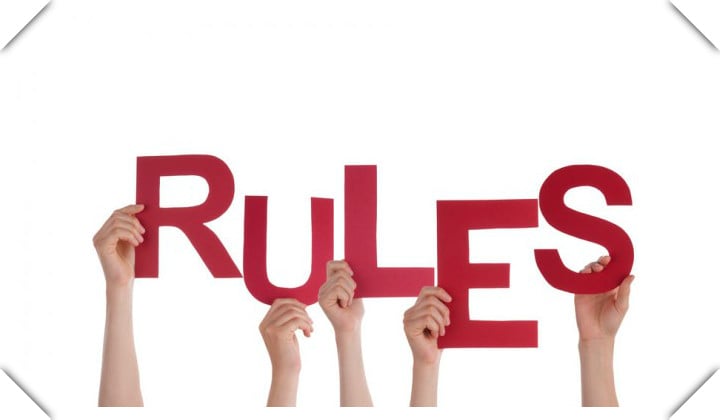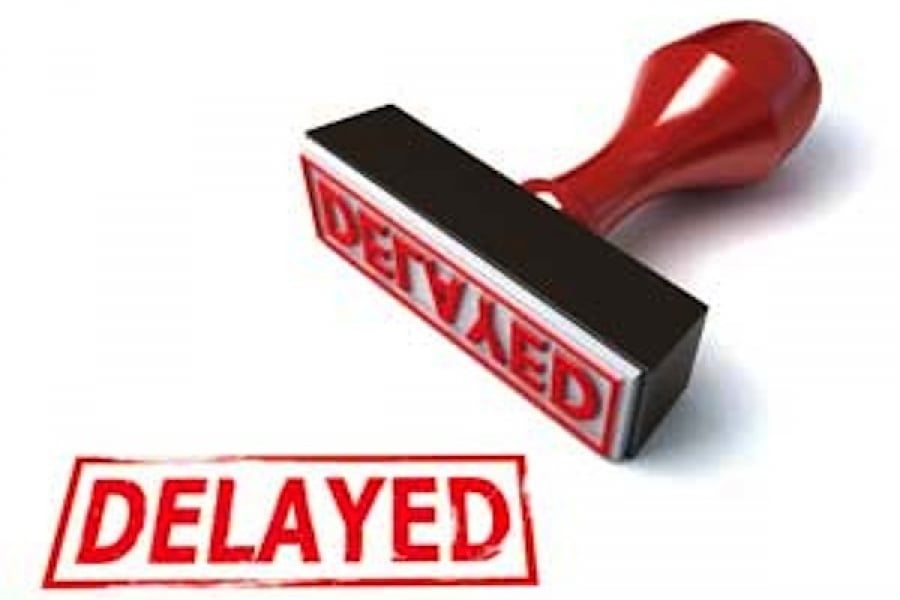Despite the several books on purchasing in the society and so many corporate purchasing training programs, Leelinesourcing recommends getting practical knowledge from those in the industry.
The most basic knowledge of purchasing is usually the most important one. It is also a must for those that are new to the industry.
However, books and training are few and far between.
This is why Leelinesourcing has put together the basics of purchasing for you. These basics have been compiled from what we’ve learned over the years. We hope that it helps you in your new ventures.
1. Why is it not better to buy than to sell?
Purchase expenditures typically account for 53 percent of sales revenue. When purchasing expenses are reduced and the same results obtained, direct labor costs must be reduced by 22% and manufacturing costs by 24%. The management and selling expenses must be reduced by 17%. The sales revenue must increase by 34% if the profit ratio is to remain constant.
From this, we can see that the improvement of profits through the reduction of procurement costs is not easy but also avoids product imitation making it hard for consumers to resist. On the other hand, if the profit is increased by an increase in selling price or sales revenue, it is easy to incur boycott from customers or face the vicious competition in the industry. Therefore, under the current operating environment, the success of purchase is not only related to the normal operation of the enterprise’s production and marketing activities but also directly affects the operating profit, as well as the enterprise’s goodwill and image. It is advised that you buy better than the manner in which you sell.
2. What qualities should a good purchasing person have?
• Justice and honesty
• Fineness of fortune
• Professional dedication
• Modesty and patience
3. What skills should a good buyer have?
Cost consciousness and value analysis ability. They also need to have a predictive ability; expressive ability and professional knowledge.
4. Why do some enterprises or organizations use segmented procurement operations?
Piecewise work has the following advantages: Each buyer is only responsible for part of the procurement process. As we all know, practice makes perfect. When each buyer concentrates on one area, mistakes are reduced, and efficiency improved. There is also the division of labor and cooperation reducing internal constraint. This leads to things moving smoothly through at every stage with each buyer playing his part.
5. Why does purchasing have to be strategic?
Formulating the purchase strategy is based on the analysis of the external environment and the results of enterprise self-evaluation. You also need to look at the purchasing force to the supply force. This is the only way to find opportunity points or the weakness to develop a strategy that will deal with the supplier. This also becomes the purchasing personnel’s action policy to carry out the work.
6. Which materials are worth developing a procurement strategy?
Purchasing strategies should be developed for materials that have a significant impact on the activities and costs of the enterprise. Good examples include the high value-added materials and materials with shortages external conditions such as war, transport difficulties and major changes in exchange rates. You also need to consider materials that cannot be made after finishing natural resources such as silver, lead, and mercury.
7. What purchasing strategy should be used when the buyer has the upper hand?
Usually, a repressive strategy is used.
Distribute the purchase quantity to several suppliers and exert proper pressure to force the seller to lower the price.
Spot purchases should be preferred.
In addition to dealing with existing suppliers, keep in touch with new suppliers who are interested.
Ask the supplier to increase delivery times and assist the warehouse in reducing inventory.
The feasibility of substitutions should be studied.
Force suppliers to reduce purchase costs through engineering.
The seller shall be responsible for the delivery or storage of the goods.
8. What purchasing strategy should be used when the seller has the upper hand?
Be flexible.
The required quantity must be purchased from one supplier.
Do not initiate price negotiation with suppliers.
Try to sign long-term contracts with suppliers.
Actively seek new suppliers.
Safety stock should be maintained.
The buyer should try to be self-sufficient.
Alternatives should be actively sought.
Make research to obtain lower procurement costs.
Pick up the goods at the supplier by yourself.
9. What procurement strategies should be used when buyers and sellers are evenly matched?
Adopt a balanced strategy.
If delivery is normal, the current situation should be maintained.
If there is a delay in delivery or insufficient quantity, transfer the quantity carefully but first seek commitments from other manufacturers.
The buyer may seek an opportunity to ask the seller for a reduced price.
The buyer can purchase from stock or contract.
Select new suppliers to replace less favorable sources.
Maintain a buffer against inventory.
If buyers and sellers cooperate well, they do not need to set up their own factory. But if the relationship deteriorates, the need for self-production should be considered.
Introducing substitutes creates advantages.
Because of the high cost of the project, the value project must be adapted to the situation.
10. What are the conditions that are applicable to the real-time purchase?
An enterprise that produces goods on order.
When supply is flowing freely.
A bearish item.
Perishable articles.
Underfunded enterprises.
11. What conditions are pre-ordered standby applicable to?
Stable production enterprises.
Inventory control.
Durable items that need small storage space.
Fixed purchase cost.
12. What is speculative buying? And on what conditions does it apply?
The so-called “speculative purchase” means that the purchase quantity is several times the normal consumption quantity or the purchase quantity. It is generally applicable to the following three conditions:
1) The rising prices of goods.
2) Shortage of expected sources.
3) Enterprises with deep financial resources.
13. What is a long-term contract purchase? What are its advantages and disadvantages?
The so-called “long-term contract purchase” means that the buyer undertakes to purchase a certain amount of goods from the seller within a certain period of time, and signs the contract to keep both parties obliged.
Advantages
1) Accurate delivery date and stable source.
2) Great value and favorable trading conditions.
3) Legal guarantees are mutually beneficial.
Disadvantages
1) Price negotiation is not easy, and the contract is empty.
2) The contract quantity is fixed, which is difficult to cooperate with the market adjustment.
3) Reduced procurement function.
14. What are multiple supplies? And what are the advantages and disadvantages?
The so-called “multiple supply” means to distribute the purchase quantity to several different suppliers.
Advantages
1) The seller competition causes the seller to produce the crisis consciousness.
2) Scattered sources without interruption.
3) More market intelligence is conducive to mastering the trend.
4) Easy to access to product expertise.
Disadvantages
1) Decentralized procurement, loss of quantity discount.
2) Lack of dependence relationship between buyers and sellers.
3) Increase the burden of delivery management.
15. What conditions do multiple supplies apply to?
1) The need for major raw materials or items is substantial.
2) The seller cannot supply by itself.
3) Articles with standardized specifications.
16. What is an exclusive supply? And for what conditions?
An exclusive supply means purchasing from only one supplier. It is applicable to the following:
1) Common interests of both parties.
2) Source control or exclusive market.
3) Precision and complex trial products.
4) Short product life cycle and frequent design changes.
5) Products should be unique.
17. What is joint procurement? What are the advantages and disadvantages?
The so-called joint procurement refers to gathering the demand of the same industry or related enterprises to order from suppliers.
Advantages of joint procurement
1) Coordinate supply and demand and establish production and marketing order.
2) Preferential price.
3) Promote cooperation and achieve economic diplomacy.
Disadvantages
1) The procurement procedures are complex, and the host must take a lot of time.
2) Purchasing time and conditions may not meet individual requirements.
3) Create joint monopolies.
18. Where does joint procurement apply? What are the problems?
Joint procurement applies to:
1) Emergency procurement under import control.
2) The seller’s market, buyers are thin on the ground.
Joint procurement faces the following problems
1) Uneven quantity distribution.
2) Chaotic quotation method.
3) Different payment capacity.
4) Slow delivery.
19. How to find suppliers?
Finding suppliers must be proactive. You can find them yourself or be introduced by others.
In addition, the search for suppliers should not be limited to local or national sources, but should also use foreign sources of supply.
Finding suppliers can be done in the following ways:
1) Taking advantage of available data. Select from the file or list of established qualified vendors.
2) Public bidding.
3) Through peer introduction.
4) News professional publications.
5) Guild or procurement professional consulting company.
6) Attend product demonstrations.
20. Is the purchasing person the only person responsible for selecting the supplier?
No. It is advisable to select suppliers by using the purchasing, engineering, quality control, and production departments.
21. What are the objective criteria for selecting the manufacturer?
The objective criteria for selecting a manufacturer include general operating status, manufacturing, technology, financial status, quality control capability, and management system.
22. Why do qualified manufacturers still need to be classified and graded?
Qualified manufacturers are classified according to their professional functions. Classification is to group all kinds of qualified manufacturers according to their capabilities. The purpose of classification is to avoid cases of manufacturers handling all kinds of procurement cases. This also prevents the unqualified persons from doing professional jobs. The purpose of grading is to prevent manufacturers from taking orders at will. Appropriate manufacturers should be selected that meet the demands of procurement.
23. Is it better if more customers come to inquire?
In principle, more inquiries are recommended. This is because the more suppliers offer prices, the more selective and competitive power we have, and the lower the costs.
24. Why must the supplier provide a cost analysis table?
Since the buyer’s estimate of the base price or budget is sometimes not very reliable, the supplier’s Cost Analysis may be more effective.
25. If the cost analysis is provided by the seller, what problem will accompany with the negotiation of the price?
The reports used for cost analysis are usually presented in two ways:
1) Provided by the quote manufacturers themselves.
2) The procurement unit shall prepare a quotation sheet or cost analysis form in advance and provide it to all suppliers for unified filling.
If the first approach is adopted, it will be difficult to obtain consistency in the content of quotation or the project of cost analysis between different manufacturers. This also makes it more difficult to increase procurement staff that will negotiate and compare prices. Some suppliers may even avoid this heavy burden and make shortcomings. The benefit provided by such a hasty cost analysis table is rather limited.
On the contrary, the cost analysis table in the second system can be adopted. Since the quotation content and the project have been planned in advance by the purchasing unit, and the quotation basis of each manufacturer is completely consistent, there will be no discrepancies. This makes the work of comparing prices twice as effective.
26. Why do you need price analysis?
Through price analysis, we can compare the price of the supplier and achieve the goal of fair competition. A price analysis will result in the following benefits:
1) Finding an error in the quotation in advance, avoiding disputes for future delivery, and ensuring that any conditions attached to the supplier are acceptable to the buyer.
2) Unify different quotation bases to facilitate future bargaining and price comparison.
3) Develop the cost analysis ability of purchasing personnel, and avoid the lack of negotiation according to the “total price.”
27. Should the bargaining begin with a higher or lower offer?
After the quotation analysis and review, a quotation of 3 ~ 7 manufacturers is arranged in the order of high and low (price comparison). The third lowest bidder should be contacted first to negotiate the price. This is then followed by the second lowest bidder. After these two negotiations, a “reserve price” may emerge. If the reserve price is lower than that of the lowest bidder, it means that the intention of the third and second lowest bidder is quite high. We can then contact the lowest bidder to negotiate the price. The lowest bidder will then be asked to reduce the lowest price to the bottom price of the third and second lowest quotation. If the lowest bidder is not willing to reduce the price, the second or third lowest bidder can conclude the transaction at the lowest price after negotiation.
28. How do purchasing staff leverage the bargaining power of their supervisors?
The willingness and range of suppliers to reduce prices are often different due to different bargaining objects. If buyers are not satisfied with the result of the negotiation, they need to request a competent purchasing manager and general manager who will then invite the seller’s business manager or higher management for direct talks. This is because senior executives do not have good bargaining skills and negotiation skills. However, they are good at social relations and higher status. They are also more likely to win the trust and friendship of others.
29. What bargaining techniques should be used for modular products?
We should use “break up into parts” bargaining skills:
1) Ask the supplier who can supply the complete product to provide the quotation, but the quotation must include a separate quotation for each component.
2) According to the quotation of each supplier, find out the lowest total price and set it as the upper limit of the transaction price in the future.
3) In addition, other professional manufacturers (those who cannot provide complete products) are requested to make offers for individual components.
4) Select the lowest price of each component from the quotation of all manufacturers, including those who provide the complete product and single component.
5) Add up the minimum price of the above-mentioned individual components, and the total price obtained shall be the lower limit of the transaction price in the future.
6) Based on the upper limit of item 2 and the lower limit of item 5, the transaction price in the future shall be between the upper and lower limit. However, the lower limit is only the sum of the prices of individual components, and the combined cost, test cost, etc. should be added. This gives us a minimum total value that is slightly higher than the lower limit.
30. Why should the buyer not over press the seller to lower the price?
1) It will cause many inferior manufacturers: When the buyer forces the seller to accept the unreasonable price, some manufacturers may be angry and leave. Some will tell you there are no goods left. This usually causes delivery and quality problems which are disasters for buyers.
2) There is the possibility of retaliation. When the market condition is improved, the original manufacturer that had compromised himself will definitely return with interest, causing the buyer’s cost soaring
31. Why can’t the buyer reveal his intention to buy?
The buyer should adopt the bargaining technique of “playing hard to get” and not clearly show the attitude of “must buy,” otherwise the buyer will be at a disadvantage. The buyer can also adopt a “walk away” posture. This is only if the buyer can judge that the seller has a strong intention to sell. Ask for a lower price, and make a “not agree to give up” attitude, or make a statement to seek other sources separately.
If the seller wants to sell, but the profit is too low, he will ask the buyer to increase the price slightly. If the buyer’s demand is also very urgent, the price should be slightly increased and the transaction done quickly.
However, if the buyer is not in urgent need, he can indicate that the price should not be increased, and the seller is very likely to agree to the buyer’s request for reduction.
32. How to deal with the supplier’s offer?
Ask suppliers to disclose cost information and then add reasonable profits to calculate the price. In terms of costs, costs shall be checked on a case-by-case basis, most of which is to eliminate or reduce the items that may be faked by the supplier. As far as profit is concerned, it is difficult to have certain standards due to different situations in different industries. In addition, it depends on the transaction amount, and the supplier’s profit usually decreases with the increase of transaction amount.
33. Why do suppliers often fail to deliver on time?
1) Poor production capacity or insufficient manufacturing capacity.
2) Poor subcontracting.
3) Lack of responsibility.
4) Poor manufacturing process or poor quality.
5) Lack of materials.
6) Wrong quotation or low price.
34. What is the buyer’s responsibility for the delay in delivery?
1) Insufficient time for purchase and shipment.
2) Temporary change of specifications.
3) Incorrect production plan.
4) Emergency orders.
5) Select the wrong order object.
6) No positive reminders.
7) Failing to supply materials or molds in time.
8) Poor technical guidance.
9) In case of low price order.
35. How to ensure that the supplier delivers on time?
1) Make reasonable purchase and shipment time.
2) Strengthen contacts with sales, production and purchasing units.
3) Arrange a positive reminder and check in the factory.
4) Prepare alternative sources.
5) Increase the penalty for breach of contract.
36. How does check and accept the work well?
A. Count quantity.
B. Check quality.
1) Confirm the supplier, where the materials come from, and whether there is error or confusion.
2) Confirm the delivery date and acceptance date.
3) Determine the name and quality of materials.
4) Count the quantity.
5) Inform the acceptance results.
6) Handle losses.
7) Return unqualified items.
8) Handle packaging materials.
9) The checked and accepted storage shall be marked.
Well, this is the end of this summary of the basic knowledge about sourcing products from China. If you have any other questions, please contact Leelinesourcing by email or through the website (https://leelinesourcing.com/).








